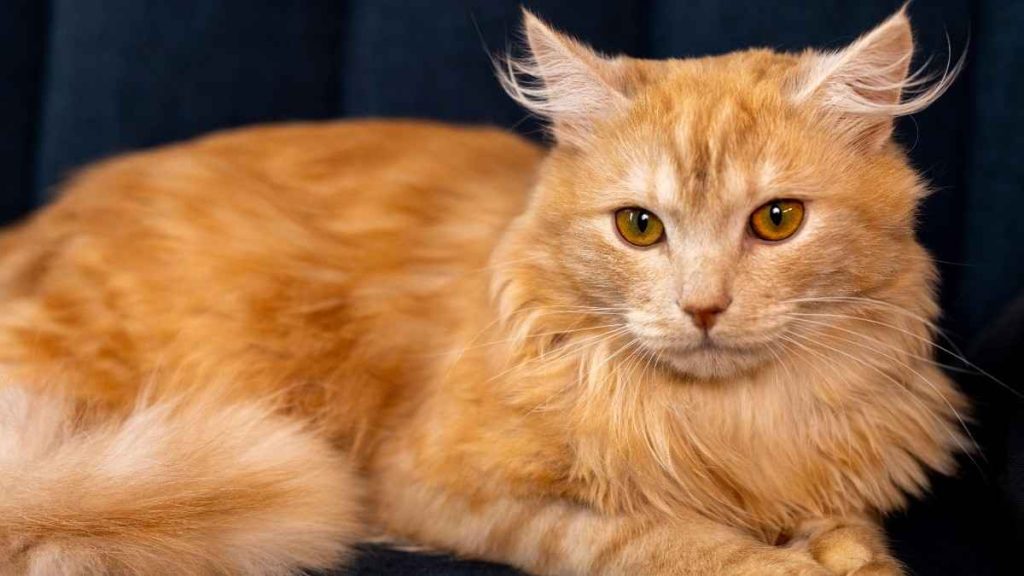Cats have always been one of the most adored pets worldwide, thanks to their elegance, intelligence, and mysterious charm. While common breeds like Persian, Siamese, and Maine Coon often steal the spotlight, there exists a world of rare cat breeds that are just as fascinating, if not more. These breeds are unique in appearance, personality, and origin, making them highly sought-after by cat enthusiasts.
Rare cat breeds often come with captivating features like curly coats, unusual patterns, or striking eye colors that set them apart from the ordinary. Some of them even have historical or cultural significance, while others are relatively new and have been developed through selective breeding. In this article, we’ll take you on a journey to discover the most beautiful rare cat breeds in the world, their unique characteristics, origins, and why they’re so special.
If you’ve been looking for a feline companion that stands out from the crowd, or you simply love learning about cats, this guide is for you. Let’s dive into the enchanting world of rare cat breeds and explore what makes each one truly exceptional.
What Makes a Cat Breed Rare
Genetic Rarity
Some cat breeds are rare simply because of their genetic makeup. A specific mutation or combination of traits might exist in only a few bloodlines, making them a rarity in the feline world.
Geographical Rarity
Certain cats are only found in isolated regions or specific countries. That geographical limit makes them harder to find outside their native areas.
Selective Breeding & Low Population
Many rare breeds come from small, controlled breeding programs. Sometimes they’re newly developed, and other times they’ve been preserved by a handful of enthusiasts.
Top 10 Rare Cat Breeds
1. The Russian Blue
Origin: Russia
The Russian Blue is a mesmerizing breed known for its stunning silver-blue coat and vivid green eyes. This breed is not just beautiful but also incredibly intelligent and affectionate. Their short, dense fur gives them an almost velvety texture, and their calm, gentle nature makes them an excellent family pet.
Why Rare?
Although recognized globally, Russian Blues are not as commonly found as Persians or Siamese cats. Their selective breeding and unique coat color make them a rare treasure among cat enthusiasts.
Key Features:
- Striking silver-blue coat
- Brilliant green eyes
- Highly intelligent and loyal
- Gentle, affectionate personality
2. The Turkish Van
Origin: Turkey
Nicknamed the “swimming cat,” the Turkish Van is a fascinating breed that loves water—a trait that sets it apart from most cats. This rare breed has a semi-long coat that’s silky and water-resistant, making it perfect for their love of swimming. Their unique color pattern, often referred to as the “Van pattern,” features color only on the head and tail while the rest of the body remains white.
Why Rare?
Turkish Vans are not commonly bred outside their native region. Their rarity is also due to their distinct markings and water-loving nature, which is not commonly found in cats.
Key Features:
- Loves water and swimming
- Unique Van color pattern
- Muscular and active
- Intelligent and social
3. The Khao Manee
Origin: Thailand
The Khao Manee, also known as the “Diamond Eye” cat, is one of the rarest and most enchanting breeds in the world. Its name translates to “White Gem,” and for good reason—the breed boasts a pure white coat paired with striking eyes that can be blue, gold, or odd-colored (one blue and one gold).
Why Rare?
This breed is deeply rooted in Thai royalty and was historically considered a symbol of good luck and prosperity. They are still hard to find today, making them one of the rarest cats globally.
Key Features:
- Pure white, short coat
- Striking eye colors (often heterochromatic)
- Elegant and graceful appearance
- Highly intelligent and affectionate
4. The Kurilian Bobtail
Origin: Russia and Japan
Known for its adorable pom-pom-like tail, the Kurilian Bobtail is a medium-sized cat with a wild appearance but a friendly disposition. These cats are muscular, strong, and have a dense double coat that helps them survive in colder climates.
Why Rare?
Kurilian Bobtails are not widely bred outside their native regions, making them a rare find in other parts of the world.
Key Features:
- Short, fluffy tail
- Strong, muscular build
- Thick double coat
- Intelligent and playful nature
5. The Egyptian Mau
Origin: Egypt
The Egyptian Mau is one of the oldest and most naturally spotted domestic cat breeds. This breed is famous for its beautiful spotted coat, which comes in shades like silver, bronze, and smoke. Its grace and elegance make it look like a miniature wildcat.
Why Rare?
True Egyptian Maus are hard to find because they are not as commonly bred as other spotted breeds like the Bengal.
Key Features:
- Naturally occurring spots
- Athletic and graceful
- Bright green eyes
- Extremely loyal and playful
6. The LaPerm
Origin: United States
If you’ve ever seen a cat with curly hair, chances are you’ve met a LaPerm. This rare breed has a naturally curly coat, which can be long or short. They come in a variety of colors and patterns, and their affectionate personality makes them a favorite among those lucky enough to find one.
Why Rare?
The LaPerm’s unique curly coat is a result of a genetic mutation, and they are not commonly bred compared to other cats.
Key Features:
- Curly or wavy coat
- Affectionate and loving
- Playful and active
- Unique and eye-catching appearance
7. The Serengeti Cat
Origin: United States
Developed to resemble the African Serval without wild ancestry, the Serengeti cat is a striking breed with long legs, large ears, and bold spots. Their sleek body and exotic look make them a favorite for cat lovers who adore wild-looking breeds.
Why Rare?
Serengeti cats are the result of careful breeding and are not as widely available as other domestic cats.
Key Features:
- Bold spotted coat
- Elegant, tall build
- Active and vocal
- Friendly and social
8. The American Wirehair
Origin: United States
The American Wirehair is instantly recognizable due to its unique wiry coat, which feels springy to the touch. This breed is a spontaneous mutation and is considered one of the rarest in the U.S.
Why Rare?
They are not as commonly bred as other American breeds, making them difficult to find even in their home country.
Key Features:
- Distinctive wiry coat
- Calm and adaptable
- Low grooming needs
- Loyal and affectionate
9. The Tonkinese
Origin: Thailand
The Tonkinese cat is a beautiful blend of Siamese and Burmese breeds, resulting in a cat with striking aqua-blue eyes and a soft, mink-like coat. They are sociable, intelligent, and incredibly playful.
Why Rare?
Tonkinese cats are less common than their parent breeds and are considered rare in many countries.
Key Features:
- Aqua-colored eyes
- Short, silky coat
- Playful and affectionate
- Great with families
10. The Sokoke
Origin: Kenya
The Sokoke is one of the rarest cat breeds in the world and is native to the coastal forests of Kenya. Its short, mottled coat gives it a wild look, and its slim, muscular body is built for agility.
Why Rare?
Sokokes are incredibly hard to find outside their native region and are highly prized by collectors and cat enthusiasts.
Key Features:
- Exotic wild-like appearance
- Slim, athletic build
- Short, patterned coat
- Intelligent and active personality
Care Tips for Rare Cat Breeds
Owning a rare cat breed comes with unique responsibilities. Here are some essential tips:
- Proper Nutrition: Choose high-quality food suitable for their specific needs.
- Regular Grooming: Some rare breeds like LaPerm or Turkish Van need extra grooming.
- Health Checkups: Rare breeds may have genetic health concerns, so routine vet visits are crucial.
- Safe Environment: Since many rare breeds are expensive and unique, ensure they live in a safe and secure home.
Final Thoughts
Rare cat breeds are not just pets—they’re living works of art. Their unique features, fascinating histories, and captivating personalities make them a dream for any cat lover. Whether it’s the curly-coated LaPerm, the exotic Sokoke, or the elegant Khao Manee, each rare breed has its own story to tell.
If you’re considering adopting one of these extraordinary cats, remember that rarity often comes with responsibility. These breeds require proper care, attention, and a safe environment to thrive. Owning a rare cat is not just about beauty, it’s about giving them the love and life they deserve.
Discovering these breeds reminds us that the feline world is full of diversity, elegance, and charm. So, the next time you think about adding a furry companion to your family, why not consider one of these rare gems?
Frequently Asked Questions (FAQs)
Q1. What makes a cat breed rare?
A breed is considered rare if it has limited population numbers, unique genetic traits, or restricted breeding programs.
Q2. Are rare cat breeds more expensive?
Yes, rare breeds often come at a higher price due to their scarcity and selective breeding requirements.
Q3. Which rare cat breed is the most expensive?
Breeds like the Khao Manee and Sokoke are among the most expensive due to their rarity and unique features.
Q4. Can I find rare cat breeds in adoption centers?
It’s possible, but extremely rare. Most rare cats are available through specialized breeders.
Q5. Do rare cat breeds require special care?
Some breeds may have specific grooming or health needs, so research is essential before adoption.


